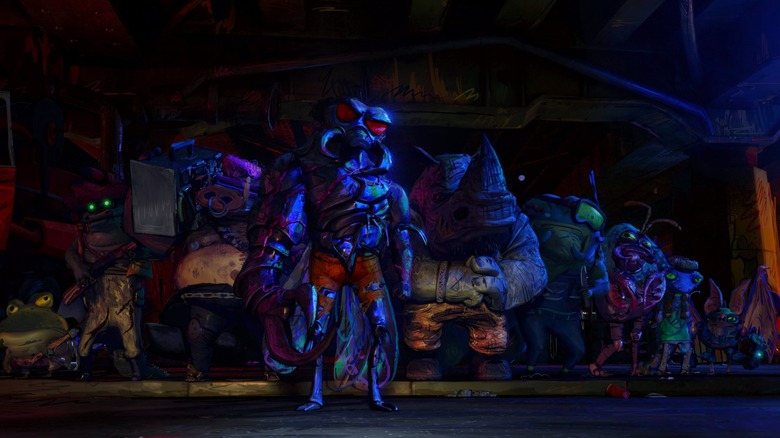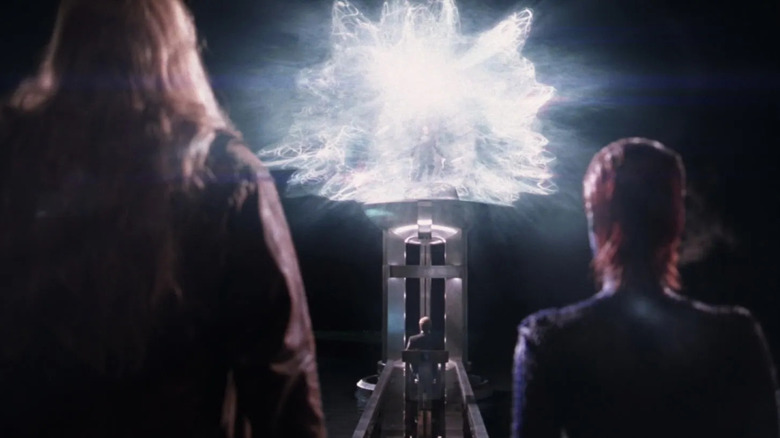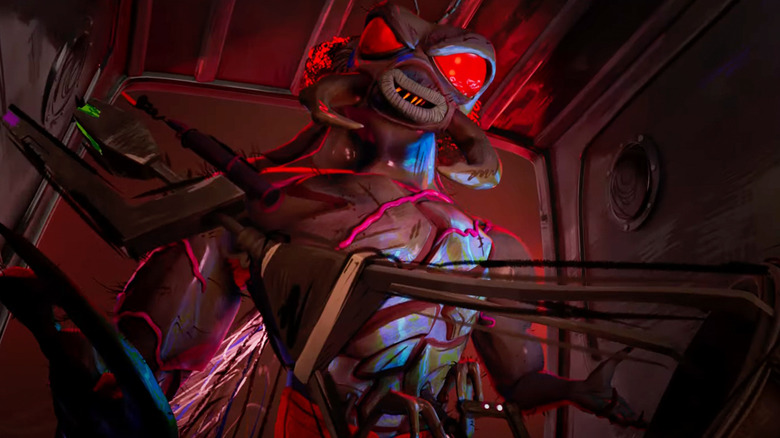Teenage Mutant Ninja Turtles: Mutant Mayhem Features The Same Villainous Plot As The First X-Men Movie
This article contains spoilers for "Teenage Mutant Ninja Turtles: Mutant Mayhem."
Most of us agree that the remarkable diversity present among human beings is a net good, a quality that provides the world with culture, perspectives of all kinds, and a richness to life. Of course, these differences can lead to people's implicit biases taking hold, and whether it's discrimination based on things like class, race, creed, or lack thereof, life can become increasingly frustrating, difficult, and even dangerous for those in the minority. Wouldn't it be so much easier for people in this situation to have a way to flip the circumstances, to either become the majority themselves or, in a more extreme fashion, get rid of everyone else (or somehow homogenize them)?
It's that dark fantasy which many a social parable has delved into, so it's no surprise that two films about misfit, outcast superhero teams feature villains looking to make this fantasy a reality: Magneto (Ian McKellen) in 2000's "X-Men," and Superfly (Ice Cube) in this summer's "Teenage Mutant Ninja Turtles: Mutant Mayhem." While Magneto and Superfly ostensibly have the same goal — building sci-fi devices that will forcibly make the emerging race of mutants the dominant species on Earth — their reasons for doing so are slightly different. The plight of "X-Men" and its mutants reference a more internal political and social struggle, whereas the mutants of "Mutant Mayhem" come from the same metaphorical place as the Universal monsters and their kin.
X-Men: what if everyone could be the same?
When Stan Lee and Jack Kirby first created the X-Men for Marvel Comics in the early '60s, they were deliberately riffing on the growing civil rights movement, creating characters like "Professor X," Charles Xavier (played in the film by Patrick Stewart) and Magneto aka Erik Lehnsherr as comic book analogs for figures like Dr. Martin Luther King, Jr. and Malcolm X.
The 2000 movie adaptation continues this tradition long-held by the comics, presenting the mutants and the X-Men as a natural result of evolution. Despite their varied and, in some cases, highly destructive natural abilities, the mutants are essentially asking to be accepted and allowed to integrate into human society, something which fearful and prejudiced humans are either fully against or, at best, are wary of.
Magneto, who it's revealed was once a colleague of Professor Xavier and with him hoped for a more peaceful resolution to the mutant issue, grew up a prisoner of the Nazis at the Auschwitz concentration camp, leaving him with little love for humanity and a distrust of their capacity for tolerance. Thus, he and his Brotherhood of Mutants plan on using a machine that generates a special radioactive field that will induce mutations in humans, essentially forcing everyone to be the same.
Unfortunately, Magneto cannot (or will not) see that this plan is fascistic in and of itself, making him no better than the evil men who imprisoned him as a child. In the end, Magneto's plan is foiled by the mutant team of X-Men, stopping the villain and destroying his machine at the not-coincidental location of the Statue of Liberty, itself a symbol of acceptance.
Mutant Mayhem: tipping the balance of power
Meanwhile, in "TMNT: Mutant Mayhem," Superfly sees humans not as bigoted kin but as full-blown oppressors. That's because Superfly and his fellow mutants aren't technically human; they're all animals, with Superfly himself once an ordinary housefly given anthropomorphic sentience thanks to Baxter Stockman's mutagen ooze. The device he's building with the help of his motley gang of mutants isn't meant to turn humans into mutants like Magneto's was, but rather to turn all wildlife on Earth into sentient mutants, too. Thus, humans would instantly become the minority species on the planet, and Superfly doesn't seem to care much about what happens to them after that. Whether it means wiping most of them out or simply turning them into an enslaved species that the mutants get to make spectacles of, Superfly tells his crew he's extremely "open to ideas" in that vein.
The plight of the mutants in the film is highly akin to the sympathetic monsters and freaks of the horror genre, from "Frankenstein" to the "Creature From the Black Lagoon" to the outcast society of Clive Barker's "Nightbreed" and the clandestine heroes of the "Hellboy" movies. It's not necessarily political integration that these mutants primarily want, but respect and acceptance. Superfly and even Master Splinter (Jackie Chan) think the worst of humans, but the Turtles manage to convince the other mutants and Splinter that humans have the capacity for change and acceptance, too, in large part because of the human pop culture the Turtles have gleefully consumed their whole lives.
Where "X-Men" acknowledges the struggle for acceptance as never-ending (concluding as it does with a literal chess game between Xavier and Magneto), "Mutant Mayhem" demonstrates that fear and intolerance can be overcome, as the mutants are hailed as heroes and the Turtles even get to attend high school with other humans, all without the use of a giant villainous mutating device. Despite their differences, both films end up turning these dark power fantasies into messages of hopeful progress.
"Teenage Mutant Ninja Turtles: Mutant Mayhem" is currently playing in theaters.


